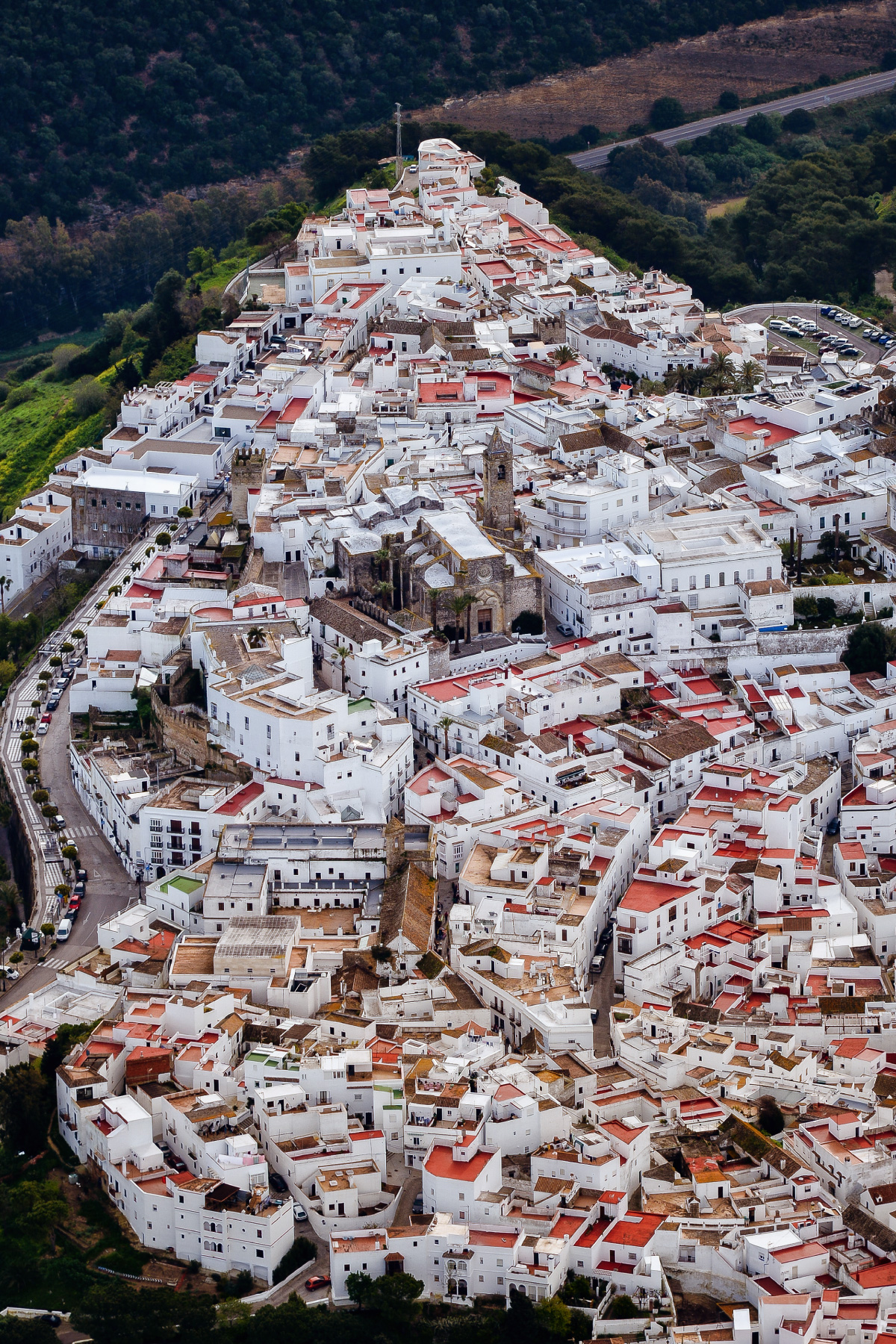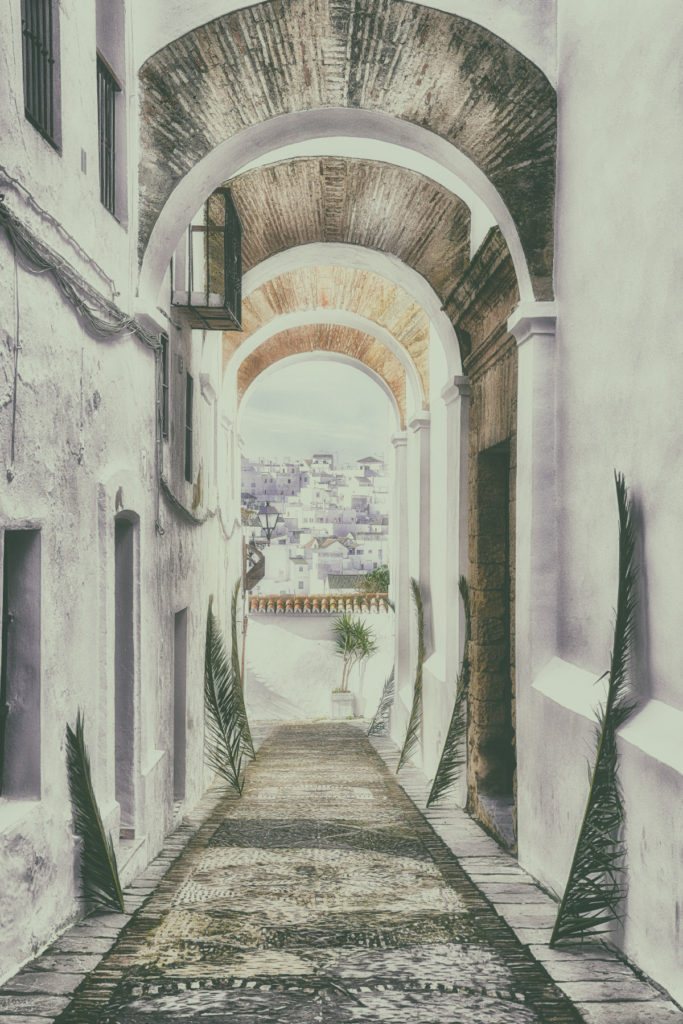
COME AND GET TO KNOW IT
HISTORY OF VEJER DE LA FRONTERA
FROM PREHISTORIC TIMES TO THE PRESENT DAY

HISTORY
On the hill on which Vejer stands (190 m. above sea level), and in the surrounding area, there is evidence of very ancient human presence.
Materials from the Bronze Age have been found under the walls and recent archaeological studies have revealed the existence of an orientalist settlement dating from the 7th century BC.
In the same place, some materials and remains of walls from the Turdetan period have been found, as well as some ceramics from the Roman period.
Prehistoric Palaeolithic remains from 500,000 years ago have also been found in the municipal area on the edges of the old La Janda lagoon, as well as a Neolithic settlement between La Muela and Parralejos.
From the Roman period there is a Roman villa in Libreros, with rich mosaic pavements, and next to it, the Horno del Chorrillo.
Finally, in the Ermita de la Oliva hermitage there is a Roman inscription reused in the Visigothic period.
In 711 the Battle of La Janda took place, in which the North African troops of Tarik defeated D. Rodrigo. From then on and for five and a half centuries, Vejer remained under Muslim rule, being the object of enrichment of the splendid Arab-Islamic culture of which we still have some vestiges such as the castle gate (11th century), part of the walls and, of course, the network of its streets.
The conquest of Vejer was a two-phase process. The first conquest of Vejer took place in 1250, in the time of King Ferdinand III “The Saint”, passing back into Arab hands in June 1264, after a revolt in which the castle was taken by force.
The second and definitive revolt began in August 1264, expelling the Mudejar population from the area, culminating at the end of 1285.
In the same year Sancho IV granted the Military Order of Santiago the lordship over Vejer and other surrounding towns, in order to consolidate the territory more quickly, although we know that the order never took possession of Vejer.
In 1307, after a second repopulation, it became the domain of Alonso Pérez de Guzmán “El Bueno”, who had already been in possession since 1299 of the lordship of the traps in the whole area of the Strait and who, after the capture of Tarifa, had also become the defender of the Strait, becoming the owner and lord, after the king, of these lands.
The Dukes of Medina Sidonia inherited the title to the town from him.

During the 15th and 16th centuries, the life of Vejer passed under the rule of the Guzmans, with the confrontation of the Vejeriegos, with Juan Relinque at the head, against the Dukes of Medina Sidonia for the control of the communal lands, known as Hazas de Suerte, already standing out in the Modern Age.
The political transformations of the 19th century and the confiscations had repercussions on the titling of properties, which passed from the ducal domain to bourgeois hands, without achieving the necessary industrial development in the town, which continued to focus its economic activity on agricultural and livestock production.
VEJER DE LA FRONTERA TODAY
Vejer de la Frontera has an impressive cultural heritage that makes it one of the most beautiful villages in Spain.
It was declared a Historic-Artistic Site in 1976, as well as being awarded the 1st National Prize for the Beautification of Villages in 1978. Vejer has been a member of the Association “The Most Beautiful Villages of Spain” since 2014.

Vejer Tourist Office
- Avda. de Los Remedios, 2 11150 Vejer de la Frontera, Cádiz.
- 956 451 736
- oficinaturismovejer@hotmail.com




